Prediction of Beach Sand Particle Size Based on Artificial Intelligence Technology Using Low-Altitude Drone Images
Abstract
1. Introduction
2. Materials and Methods
2.1. Study Area
2.2. Sediment Collection and Analysis
2.3. Machine Learning Modeling
2.4. Design of Beach Safety Diagnostic Predictions
3. Analysis Results
3.1. Calibration for Sediment Particle Diameter Using SNN Model and Particle Image
3.2. Analysis of Beach Stability by Season at Jangsa
4. Conclusions
Author Contributions
Funding
Institutional Review Board Statement
Informed Consent Statement
Data Availability Statement
Acknowledgments
Conflicts of Interest
References
- Depountis, N.; Apostolopoulos, D.; Boumpoulis, V.; Christodoulou, D.; Dimas, A.; Fakiris, E.; Leftheriotis, G.; Menegatos, A.; Nikolakopoulos, K.; Papatheodorou, G.; et al. Coastal Erosion Identification and Monitoring in the Patras Gulf (Greece) Using Multi-Discipline Approaches. J. Mar. Sci. Eng. 2023, 11, 654. [Google Scholar] [CrossRef]
- Bunce, M.; Brown, K.; Rosendo, S. Policy Misfits, Climate Change and Cross-Scale Vulnerability in Coastal Africa: How Development Projects Undermine Resilience. Environ. Sci. Policy 2010, 13, 485–497. [Google Scholar] [CrossRef]
- Gowthaman, R.; Kumar, V.S.; Dwarakish, G.S.; Shanas, P.R.; Jena, B.K.; Singh, J. Nearshore waves and longshore sediment transport along Rameshwaram Island off the east coast of India. Int. J. Nav. Archit. Ocean. Eng. 2015, 7, 939–950. [Google Scholar] [CrossRef]
- Neumann, B.; Vafeidis, A.T.; Zimmermann, J.; Nicholls, R.J. Future coastal population growth and exposure to sea-level rise and coastal flooding—A global assessment. PLoS ONE 2015, 10, e0131375. [Google Scholar] [CrossRef]
- Roelvink, D.; Huisman, B.; Elghandour, A.; Ghonim, M.; Reyns, J. Efficient Modeling of Complex Sandy Coastal Evolution at Monthly to Century Time Scales. Front. Mar. Sci. 2018, 7, 535. [Google Scholar] [CrossRef]
- Ferro-Azcona, H.; Espinoza-Tenorio, A.; Calderon-Contreras, R.; Ramenzoni, V.C.; Pais, M.D.L.M.G.; Mesa-Jurado, M.A. Adaptive Capacity and Social-Ecological Resilience of Coastal Areas: A Systematic Review. Ocean Coast. Manag. 2019, 173, 36–51. [Google Scholar] [CrossRef]
- Gibbs, M.T. Consistency in Coastal Climate Adaption Planning in Australia, and the Importance of Understanding Local Political Barriers to Implementation. Ocean Coast. Manag. 2019, 173, 131–138. [Google Scholar] [CrossRef]
- Ministry of Oceans and Fisheries. Coastal Erosion Survey Report; Ministry of Oceans and Fisheries: Sejong-si, Republic of Korea, 2020.
- Habersack, H.; Hengl, M.; Huber, B.; Lalk, P.; Tritthart, M. Fließgewässermodellierung—Arbeitsbehelf Feststofftransport und Gewässermorphologie, Austrian Federal Ministry of Agriculture, Forestry, Environment and Water Management and Österreichischer Wasser-und Abfallwirtschaftsverband ÖWAV, Vienna. 2011. Available online: https://scholar.google.com/scholar_lookup?&title=Flie%C3%9Fgew%C3%A4ssermodellierung%20%E2%80%93%20Feststofftransport%20und%20Gew%C3%A4ssermorphologie&publication_year=2011&author=Habersack%2CH&author=Badura%2CH&author=Gabriel%2CH&author=Hengl%2CM&author=Huber%2CB&author=J%C3%A4ger%2CG&author=Knoblauch%2CH&author=Krouzecky%2CN&author=Lalk%2CP&author=Mandl%2CC&author=Moser%2CM&author=Reindl%2CR&author=Rickenmann%2CD&author=Sattler%2CS&author=Sch%C3%B6berl%2CF&author=Tritthart%2CM (accessed on 11 January 2024).
- Bascom, W.N. The relationship between sand size and beach-face slope. Eos. Trans. AGU 1951, 32, 866–874. [Google Scholar] [CrossRef]
- Buscombe, D.; Masselink, G. Concepts in gravel beach dynamics. Earth Sci. 2006, 79, 33–52. [Google Scholar] [CrossRef]
- Adams, J. Gravel size analysis from photographs. J. Hydr. Eng. Div. ASCE 1979, 105, 1247–1255. [Google Scholar] [CrossRef]
- Ibbeken, H.; Schleyer, R. Photo-sieving: A method for grain-size analysis of coarse-grained, unconsolidated bedding surfaces. Earth Surf. Proc. Land 1986, 11, 59–77. [Google Scholar] [CrossRef]
- Butler, J.B.; Lane, S.N.; Chandler, J.H. Automated extraction of grain-size data from gravel surfaces using digital image processing. J. Hydraul. Res. 2001, 39, 519–529. [Google Scholar] [CrossRef]
- Graham, D.J.; Reid, I.; Rice, S.P. Automated sizing of coarse-grained sediments: Image-processing procedures. Math. Geol. 2005, 37, 1–28. [Google Scholar] [CrossRef]
- Detert, M.; Weitbrecht, V. Automatic object detection to analyze the geometry of gravel grains: A free stand-alone tool, River Flow 2012. In Proceedings of the International Conference on Fluvial Hydraulics, José, Costa Rica, 5–7 September 2012; Taylor & Francis Group: London, UK, 2012; pp. 595–600. [Google Scholar]
- Buscombe, D. Transferable wavelet method for grain-size distribution from images of sediment surfaces and thin sections, and other natural granular patterns. Sedimentology 2013, 60, 1709–1732. [Google Scholar] [CrossRef]
- Buscombe, D. SediNet: A configurable deep learning model for mixed qualitative and quantitative optical granulometry. Earth Surf. Proc. Land 2019, 5, 638–651. [Google Scholar] [CrossRef]
- Purinton, B.; Bookhagen, B. Introducing PebbleCounts: A grain-sizing tool for photo surveys of dynamic gravel-bed rivers. Earth Surf. Dynam. 2019, 7, 859–877. [Google Scholar] [CrossRef]
- Kitagawa, J.; Enomoto, K.; Toda, M.; Miyoshi, K. A Study of Bottom-sediment Classification System Using Seabed Images. J. Sens. Mater. 2018, 31, 810–823. [Google Scholar] [CrossRef]
- Machairsas, N.; Li, L.; Iskander, M. Application of Dynamic Image Analysis to Sand Particle Classification Using Deep Learning. J. Geotech. Spec. Publ. 2020, 317, 612–621. [Google Scholar]
- Maitre, J.; Bouchard, K.; Bedard, L.P. Mineral grains recognition using computer vision and machine learning. J. Comput. Geosci. 2019, 130, 84–93. [Google Scholar] [CrossRef]
- Ran, X.; Xue, L.; Zhang, Y.; Liu, Z.; Sang, X.; He, X. Rock Classification from Field Image Patches Analyzed Using a Deep Convolutional Neural Network. Mathematics 2019, 7, 755. [Google Scholar] [CrossRef]
- Lang, N.; Irniger, A.; Rozniak, A.; Hunziker, R.; Wegner, J.D.; Schindler, K. GRAINet: Mapping grain size distributions in river beds from UAV images with convolutional neural networks. Hydrol. Earth Syst. Sci. 2021, 25, 2567–2597. [Google Scholar] [CrossRef]
- Fork, R.L.; Ward, W.C. Brazos river bar: A study in the significance of grain size parameters. J. Sed. Res. 1957, 27, 3–26. [Google Scholar]
- Kim, K.; Bang, K.Y.; Han, J.H.; Choi, Y.H.; Yoo, H.; Nam, G.Y. Predicting Method the Representive Sand Diameter by Survey Height Using UAV. In Proceedings of the 2022 10th Conference on Korean Society of Coastal Disaster Prevention (KSCDP), Yeosu, Republic of Korea, 1 August 2022. [Google Scholar]
- Kim, H.; Yoo, H.; Lee, J.; Lee, S. Convolution layer with nonlinear kernel of square of subtraction for dark-direction-free recognition of images. J. Math. Models Eng. 2020, 6, 147–159. [Google Scholar] [CrossRef]
- Kim, H.; Yoo, H.J.; Lee, J.L. Nonlinear Kernel Convolutional Neural Network to find median sand particle size. J. Coast. Res. 2021, 1–5. [Google Scholar] [CrossRef]
- Bujan, N.; Cox, R.; Masselink, G. From fine sand to boulders: Examining the relationship between beach-face slope and sediment size. Mar. Geol. 2019, 417, 106012. [Google Scholar] [CrossRef]
- Battjes, J. Surf Similarity. In Coastal Engineering; American Society of Civil Engineers: Copenhagen, Denmark, 1974; pp. 466–480. [Google Scholar]
- Guza, R.T.; Inman, D.L. Edge waves and beach cusps. J. Geophys. Res. 1975, 80, 2997–3012. [Google Scholar] [CrossRef]
- Moore, I.D.; Lewis, A.; Gallant, J.C. Terrain Attributes: Estimation Methods and Scale Effects. In Modelling Change in Environmental Systems; Jakeman, A.J., Beck, M.B., McAleer, M.J., Eds.; John Wiley and Sons: New York, NY, USA, 1993; pp. 189–214. [Google Scholar]
- Dean, R.G. Equilibrium Beach Profiles: U.S. Atlantic and Gulf Coasts; Ocean Engineering Report No. 12; Department of Civil Engineering, University of Delaware: Newark, Delaware, 1977; 45p. [Google Scholar]
- McCall, R.T.; Masselink, G.; Poate, T.G.; Roelvink, J.A.; Almeida, L.P.; Davidson, M.; Russell, P.E. Modelling storm hydrodynamics on gravel beaches with XBeach-G. Coast. Eng. 2014, 91, 231–250. [Google Scholar] [CrossRef]
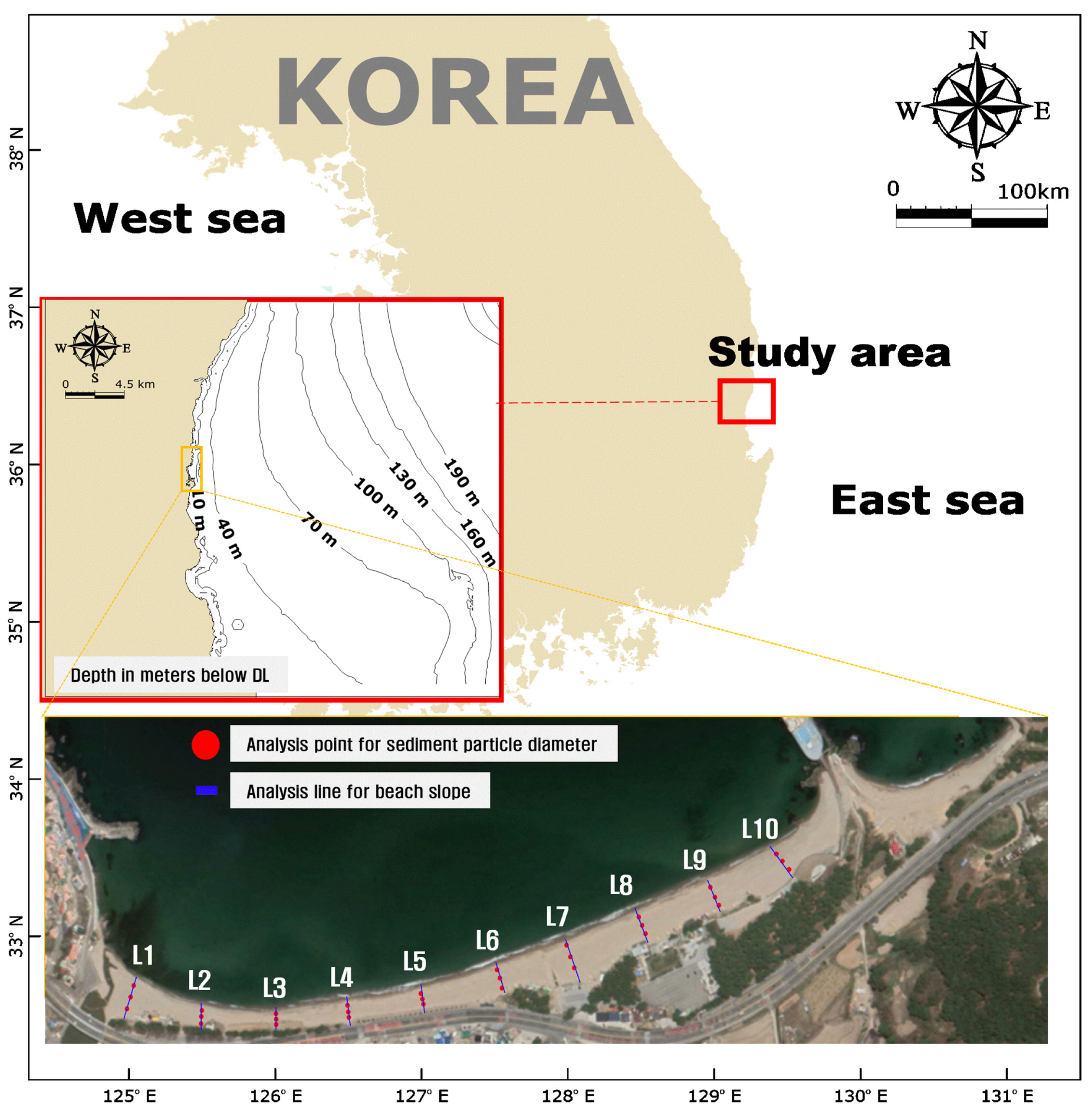
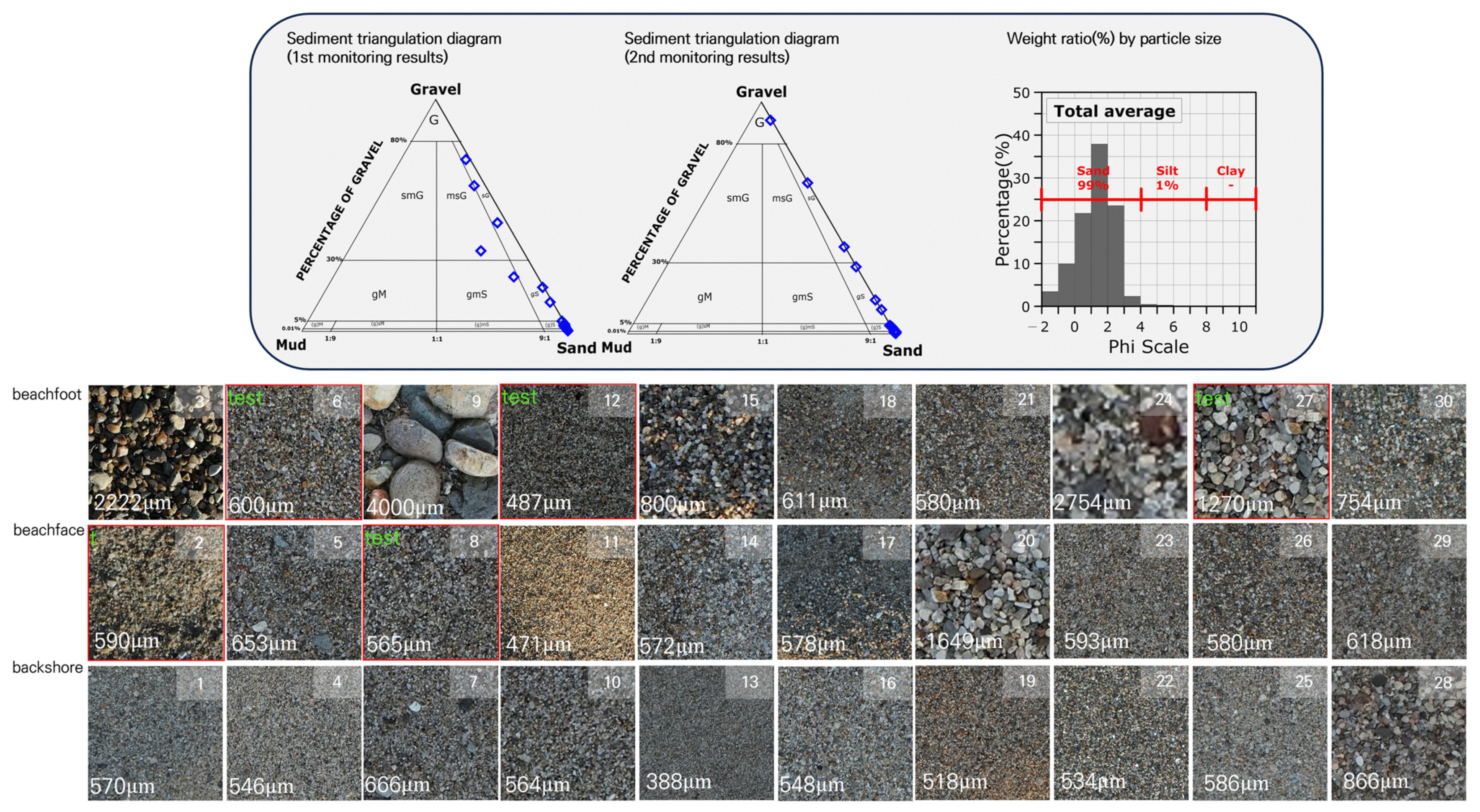
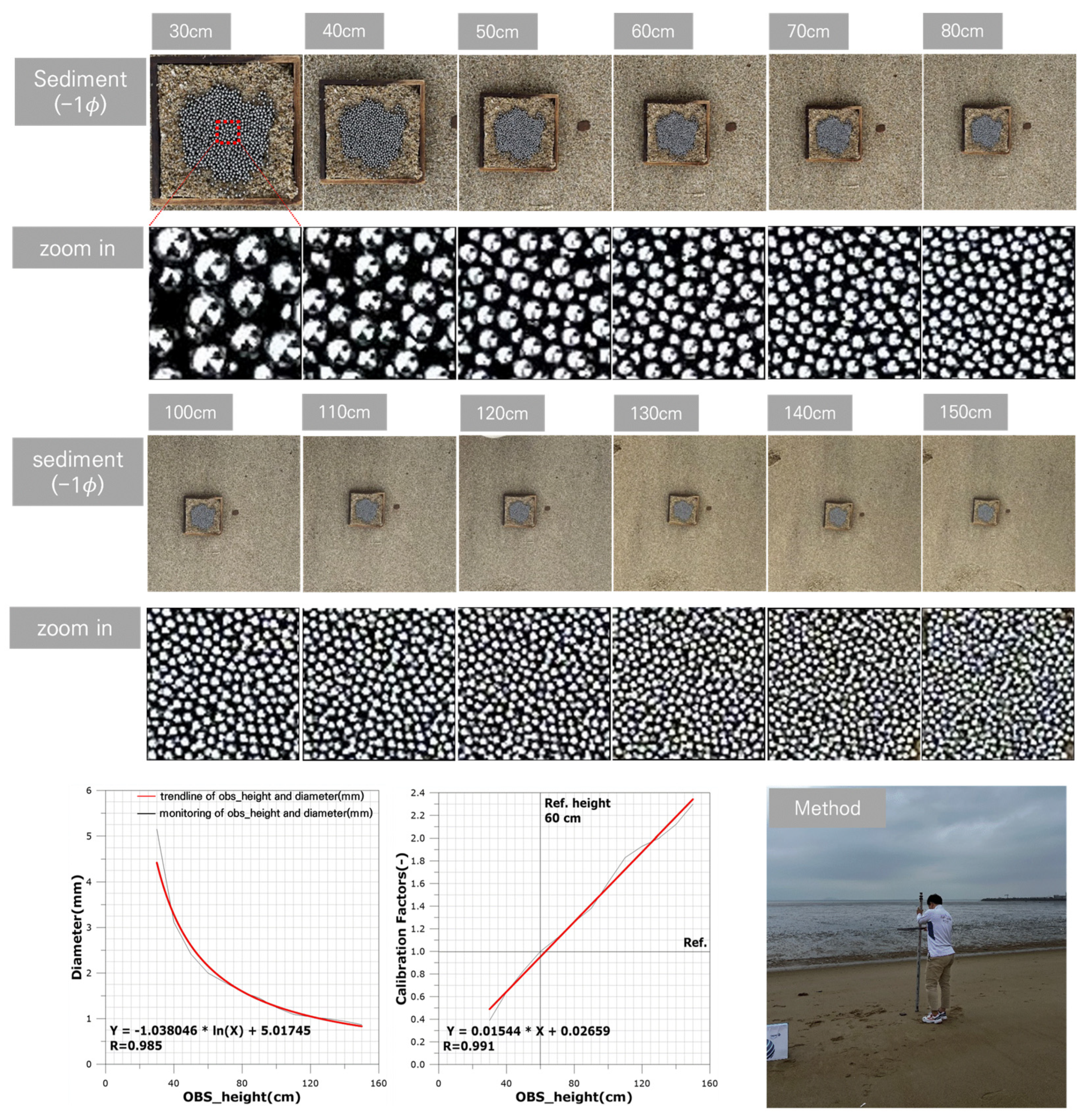

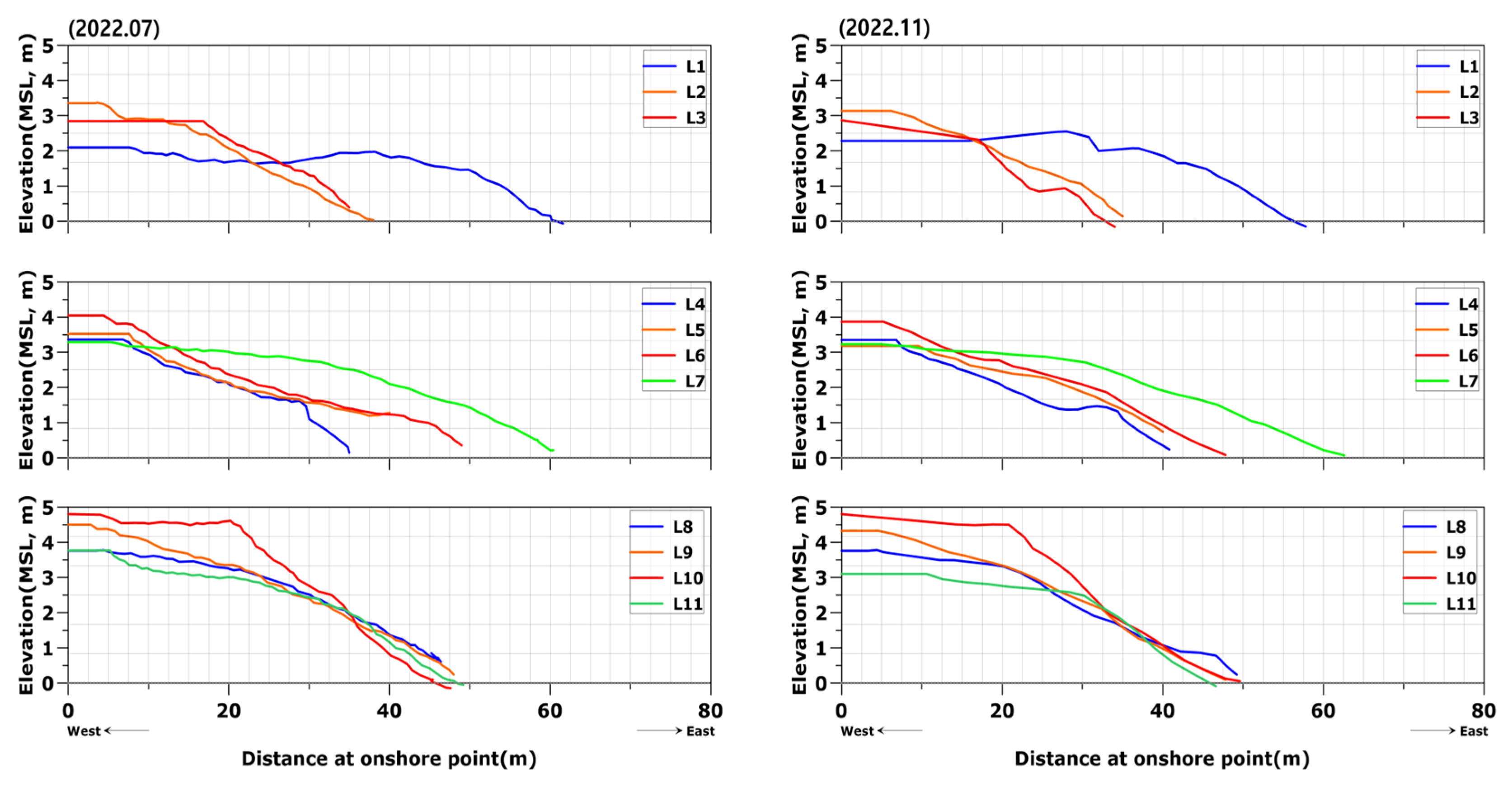
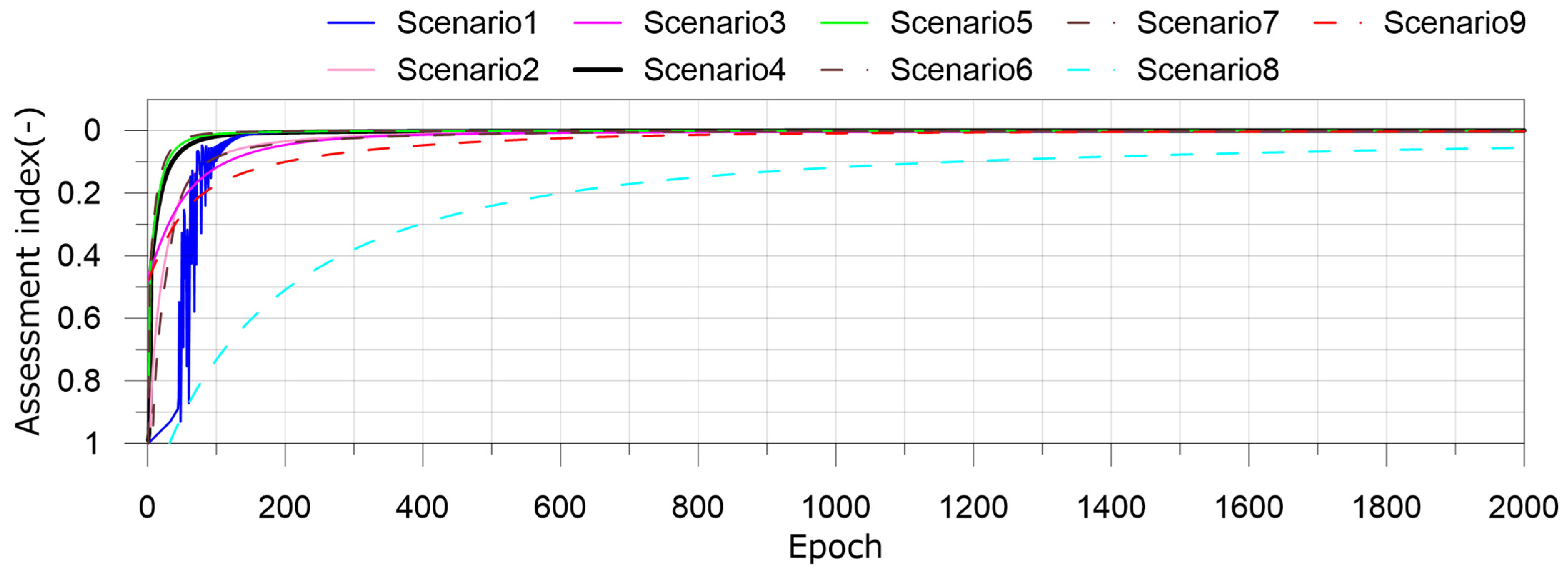
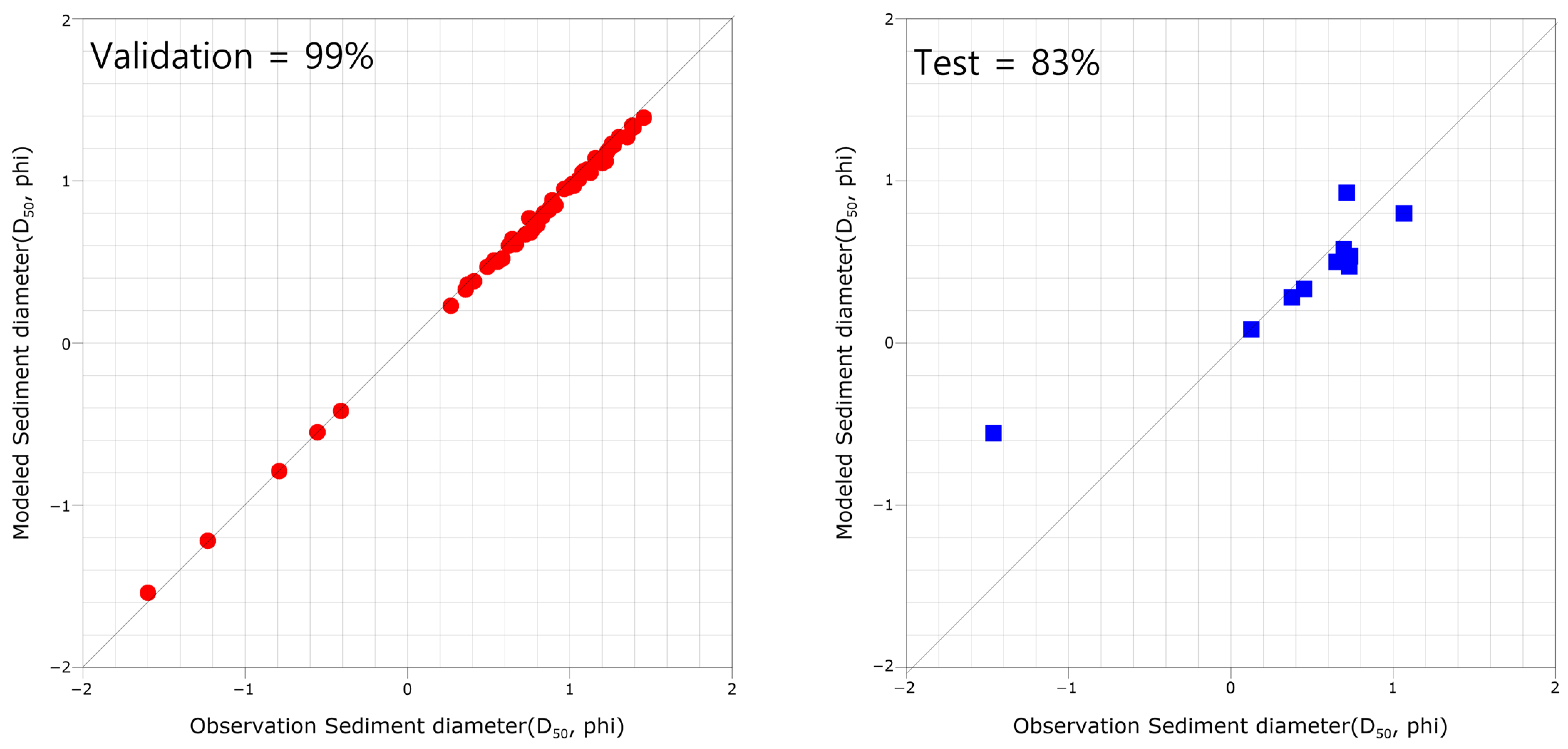

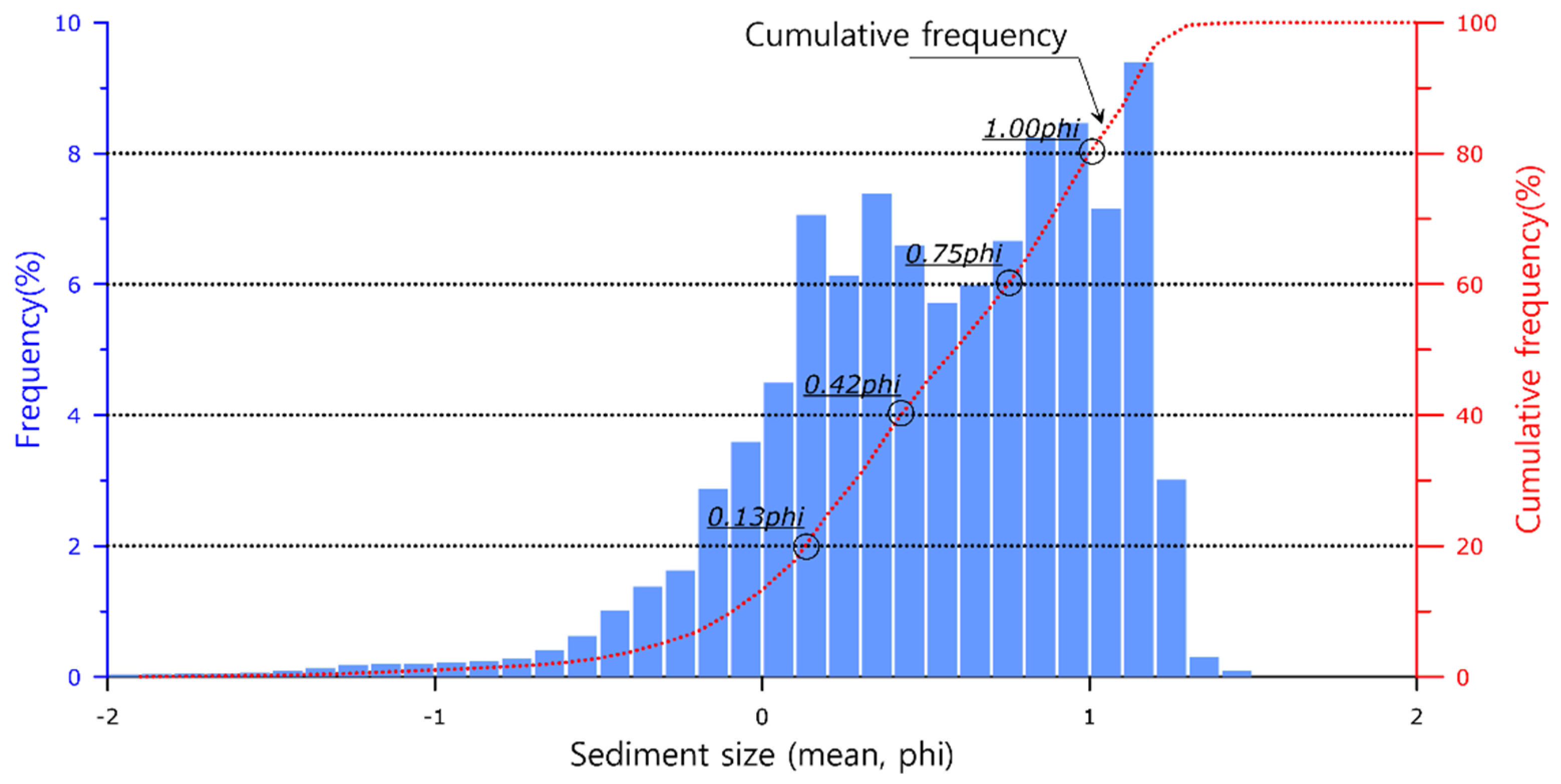

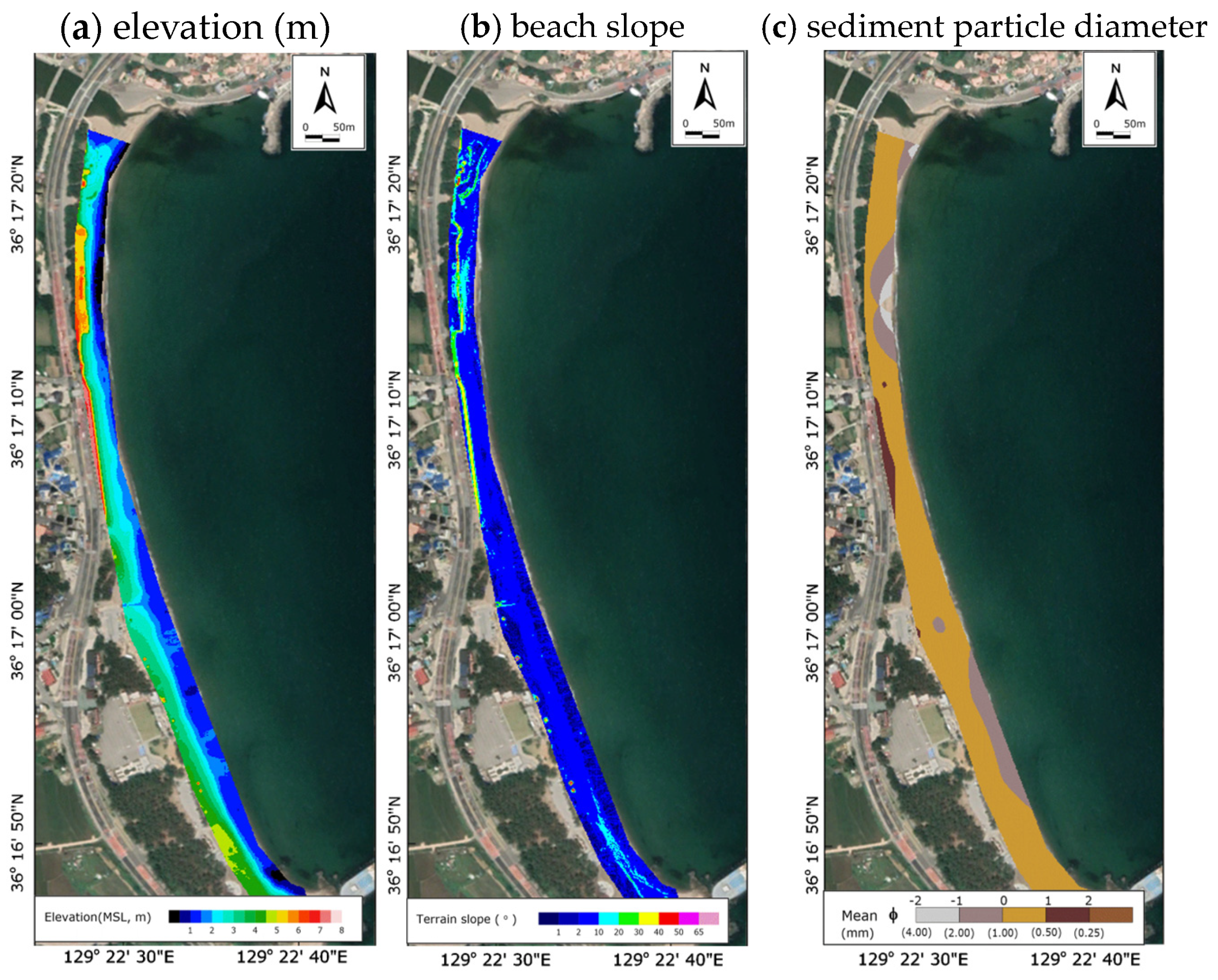
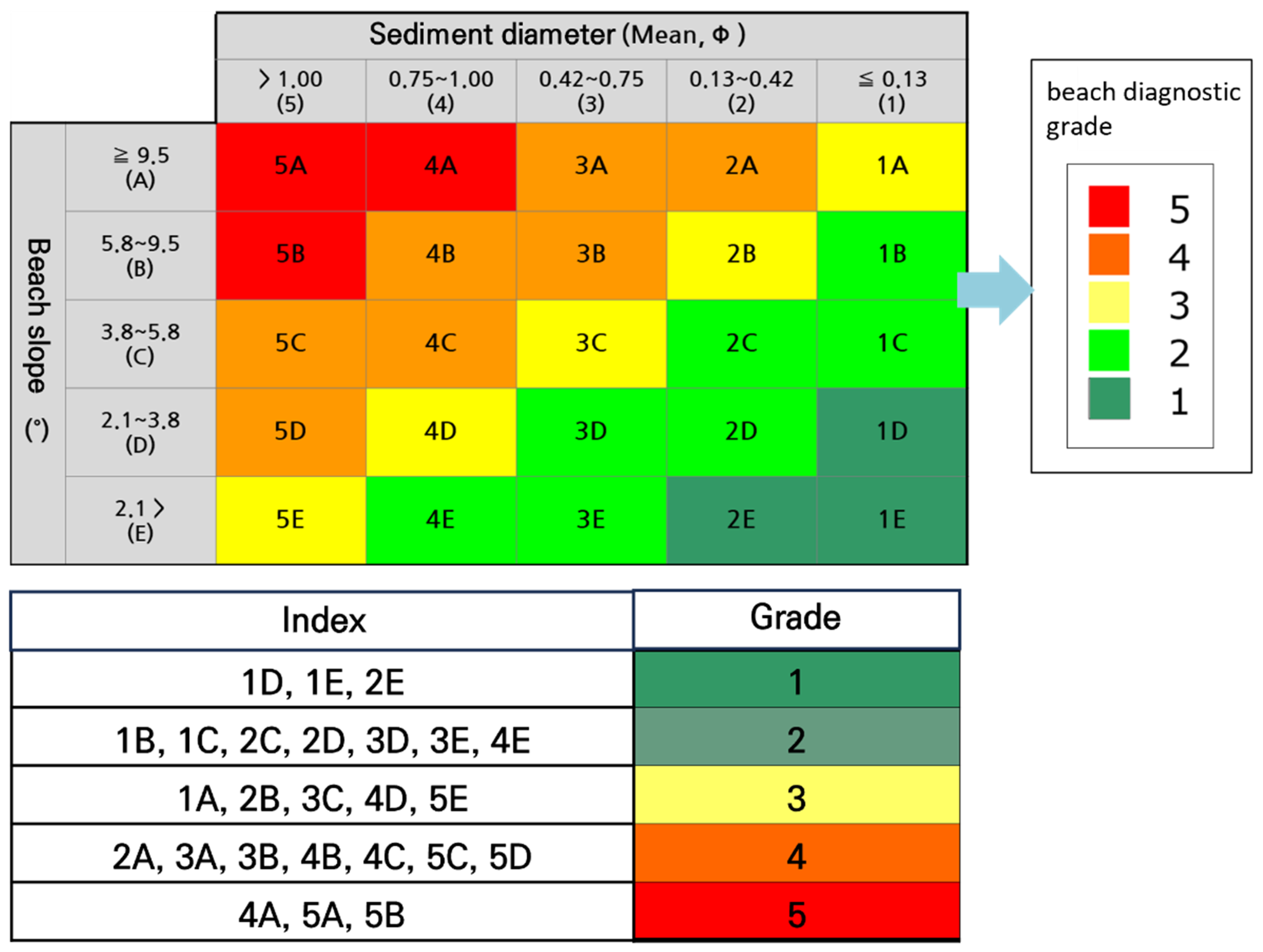
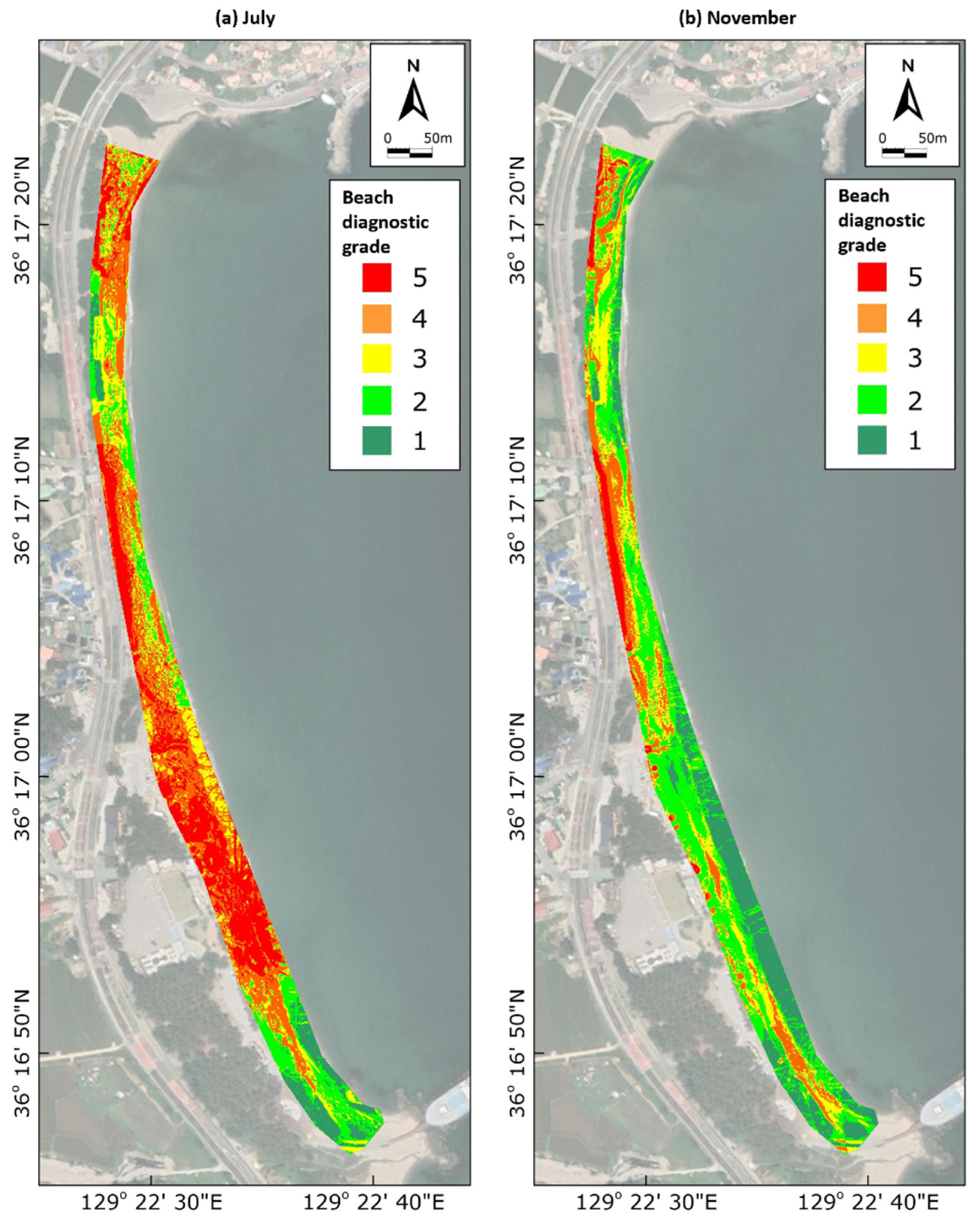
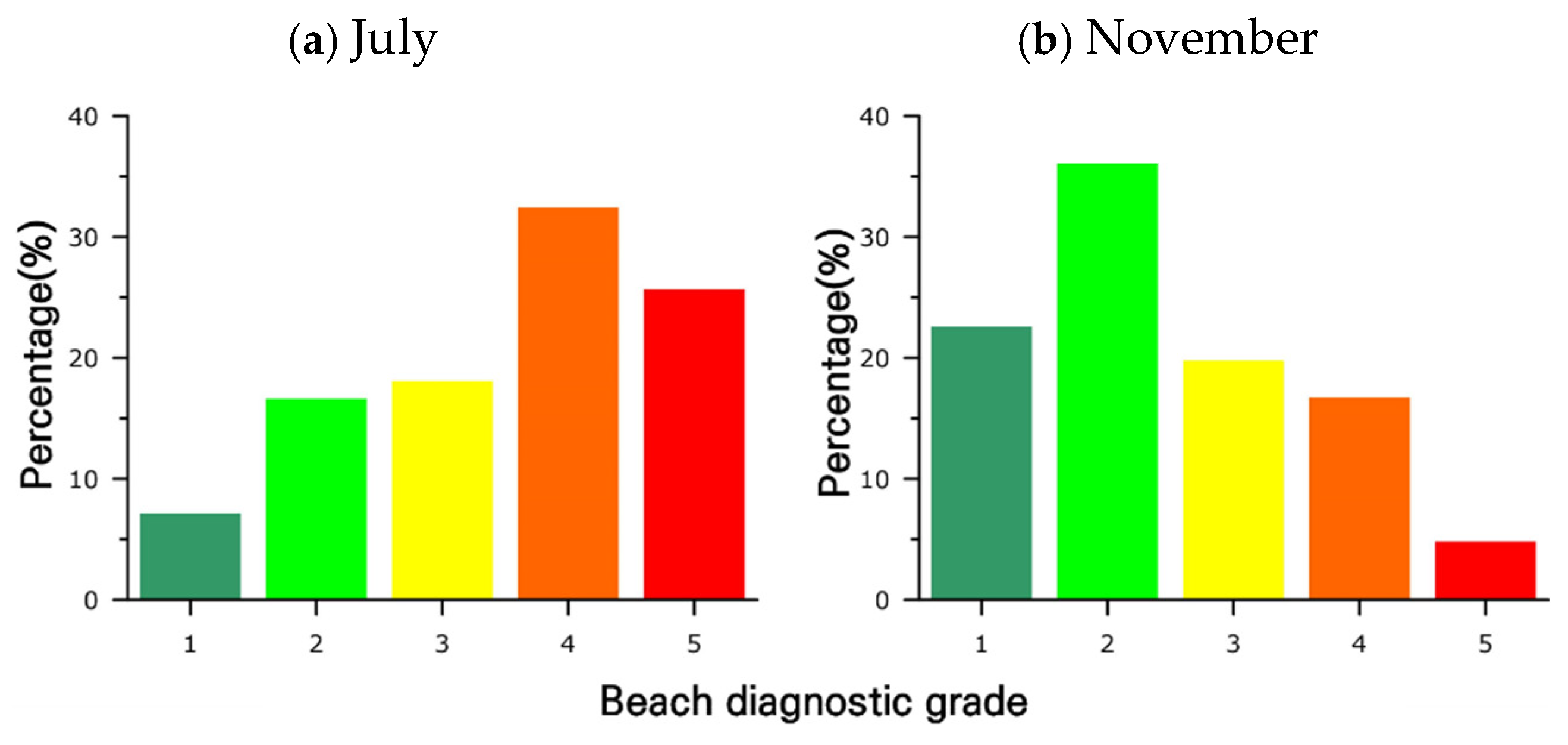
| Scenario | Condition | Accuracy (%) | |||
|---|---|---|---|---|---|
| Convolution Layer | Convolution Filter | Pooling Filter | Validation | Test | |
| 1 | 2 | 3 × 3 | 2 × 2 | 91 | 75 |
| 2 | 2 | 5 × 5 | 2 × 2 | 99 | 62 |
| 3 | 4 | 3 × 3 | 2 × 2 | 99 | 83 |
| 4 | 6 | 3 × 3 | 4 × 4 | 98 | 77 |
| 5 | 8 | 3 × 3 | 4 × 4 | 99 | 73 |
| 6 | 10 | 3 × 3 | 4 × 4 | 95 | 76 |
| 7 | 4 | 5 × 5 | 2 × 2 | 99 | 59 |
| 8 | 4 | 7 × 7 | 2 × 2 | 77 | 29 |
| 9 | 4 | 3 × 3 | 8 × 8 | 87 | 80 |
Disclaimer/Publisher’s Note: The statements, opinions and data contained in all publications are solely those of the individual author(s) and contributor(s) and not of MDPI and/or the editor(s). MDPI and/or the editor(s) disclaim responsibility for any injury to people or property resulting from any ideas, methods, instructions or products referred to in the content. |
© 2024 by the authors. Licensee MDPI, Basel, Switzerland. This article is an open access article distributed under the terms and conditions of the Creative Commons Attribution (CC BY) license (https://creativecommons.org/licenses/by/4.0/).
Share and Cite
Yoo, H.-J.; Kim, H.; Kang, T.-S.; Kim, K.-H.; Bang, K.-Y.; Kim, J.-B.; Park, M.-S. Prediction of Beach Sand Particle Size Based on Artificial Intelligence Technology Using Low-Altitude Drone Images. J. Mar. Sci. Eng. 2024, 12, 172. https://doi.org/10.3390/jmse12010172
Yoo H-J, Kim H, Kang T-S, Kim K-H, Bang K-Y, Kim J-B, Park M-S. Prediction of Beach Sand Particle Size Based on Artificial Intelligence Technology Using Low-Altitude Drone Images. Journal of Marine Science and Engineering. 2024; 12(1):172. https://doi.org/10.3390/jmse12010172
Chicago/Turabian StyleYoo, Ho-Jun, Hyoseob Kim, Tae-Soon Kang, Ki-Hyun Kim, Ki-Young Bang, Jong-Beom Kim, and Moon-Sang Park. 2024. "Prediction of Beach Sand Particle Size Based on Artificial Intelligence Technology Using Low-Altitude Drone Images" Journal of Marine Science and Engineering 12, no. 1: 172. https://doi.org/10.3390/jmse12010172
APA StyleYoo, H.-J., Kim, H., Kang, T.-S., Kim, K.-H., Bang, K.-Y., Kim, J.-B., & Park, M.-S. (2024). Prediction of Beach Sand Particle Size Based on Artificial Intelligence Technology Using Low-Altitude Drone Images. Journal of Marine Science and Engineering, 12(1), 172. https://doi.org/10.3390/jmse12010172







